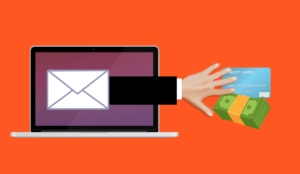Protect Your Mail From Thieves
Do you have Informed Delivery from the US Postal Service? If not, you should. Every day, it sends you an email that shows what is coming in your mail.
 However, there is also the possibility that someone could pose as you and get your Informed Delivery. This means that they could get your mail before you do.
However, there is also the possibility that someone could pose as you and get your Informed Delivery. This means that they could get your mail before you do.
In fact, this is already happening. The bad guys are signing up with the addresses of other people, and then collecting their mail. Why? Because they want to get access to things like credit card applications or new credit cards.
What if your mail contains a check? The thief could easily cash it before you even realized it was gone.
There are numerous reports that show groups of thieves in actually used the USPS to apply for credit cards via an application that we all get in our mail. They then just had to wait. They knew the exact day the credit cards would arrive because they had access to the owners’ mail via Informed Delivery. By doing this, they were able to spend around $400,000, and the owners didn’t realize it until it was too late.
A locking mailbox could certainly help, and you can also opt out of informed delivery by emailing eSafe@usps.gov. This prevents anyone from signing up for it in your name.
You can also consider a credit freeze. This does not guarantee that a thief won’t be able to steal your identity and open a credit card, but it makes it much more difficult.
Other Things You Can Do
Here are a few other things you can do:
- Check your credit cards statements each month for any charges that look strange or unfamiliar, and then immediately report them, even if it is a small amount.
- Contact the three major credit reporting agencies and sign up for alerts to get any changes in your credit report.
- Get a mailbox that locks. There is too much information out there not to have this.
Written by Robert Siciliano, CEO of Credit Parent, Head of Training & Security Awareness Expert at Protect Now, #1 Best Selling Amazon author, Media Personality & Architect of CSI Protection Certification.

 This all sounds pretty dreary, but it’s not all bad. Research is showing that many industries in the US are making strides against these fake emails, though some are working harder than others.
This all sounds pretty dreary, but it’s not all bad. Research is showing that many industries in the US are making strides against these fake emails, though some are working harder than others. That’s what’s happening with business executives in select industries (e.g., chemical operations, manufacturing), says a report at threatpost.com, citing a finding from Dell SecureWorks.
That’s what’s happening with business executives in select industries (e.g., chemical operations, manufacturing), says a report at threatpost.com, citing a finding from Dell SecureWorks.

























